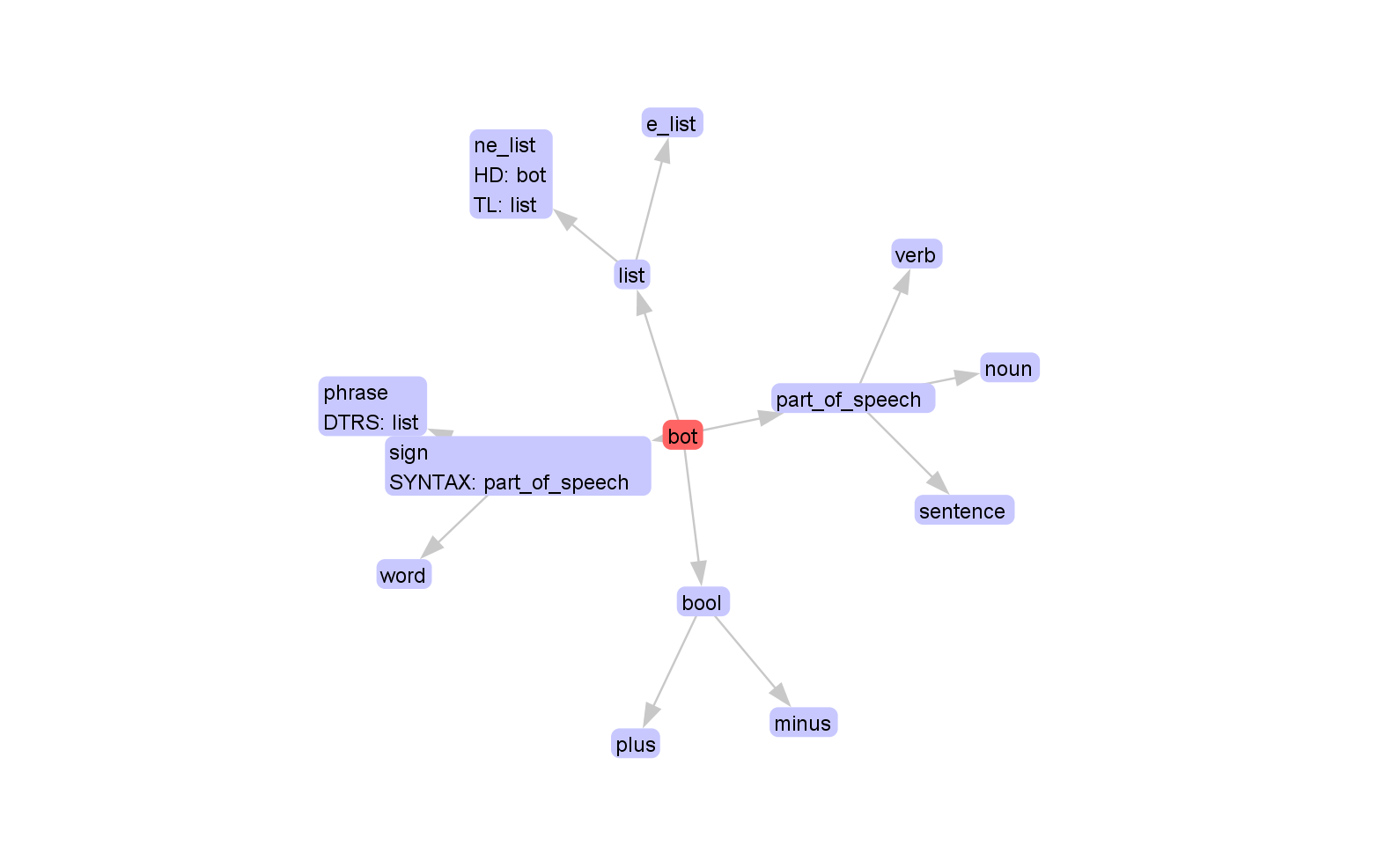Grammar Writing: Week 3: Difference between revisions
Jump to navigation
Jump to search
Nikoschenk (talk | contribs) |
Nikoschenk (talk | contribs) |
||
| Line 4: | Line 4: | ||
== Motivation === | == Motivation === | ||
Implement your first grammar including | |||
-- i.) type hiararchy, | |||
-- ii.) lexicon entries (words), and | |||
-- iii.) three syntactic rules uses to properly combine words. | |||
---- | ---- | ||
Revision as of 14:22, 1 November 2017
Motivation =
Implement your first grammar including
-- i.) type hiararchy, -- ii.) lexicon entries (words), and -- iii.) three syntactic rules uses to properly combine words.
Homework Assignment (Due November 5th)
Task 1
In DesktopTrale, model the following type hierarchy. Make sure to start with topmost types, first. Add features only after the corresponding types are specified.
Don't forget to finally update the type hierarchy to make the changes effective. No spaces, no upper case letters, only underscore characters are allowed !
Task 2
Save the Type Hierarchy both in XML and in Trale format under the name "02_SVN".
Task 3
Add lexicon entries for "Lilly", "John", "cigarettes", "books", "reads", "cars", "smokes", "drives", "gives", and "dances". (use lowercase letters also for the proper names!)
Task 4
* Add a rule called "verb_noun_rule" with two child nodes, which combines a verb followed by a noun to form a sentence node. (e.g., for "smokes cigarettes").
* Add a rule called "noun_verb_rule" with two child nodes, which combines a noun followed by a verb to form a sentence node. (e.g., for "John smokes.")
* Add a rule called "verb_noun_noun_rule" with three child nodes, which combines a verb followed by two nouns to form a sentence node and provide an example for a phrase which could be recognized from the list of available lexicon entries.
